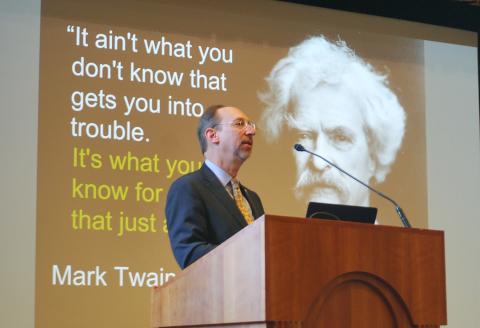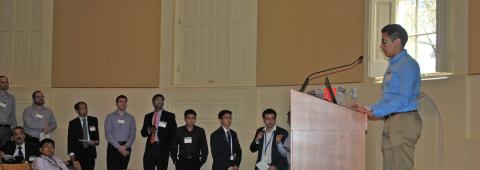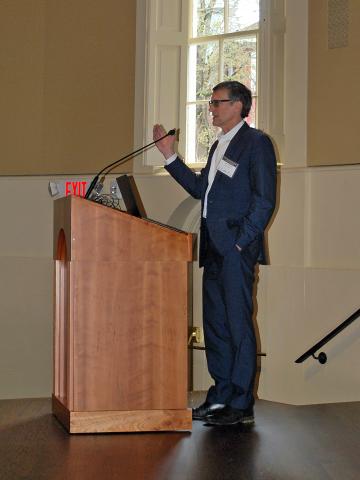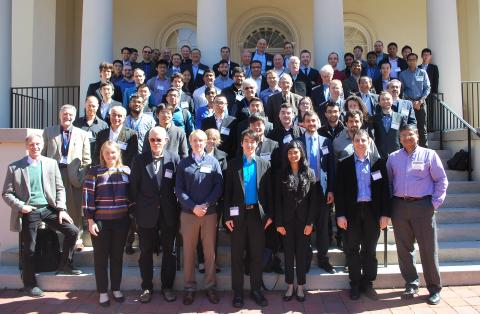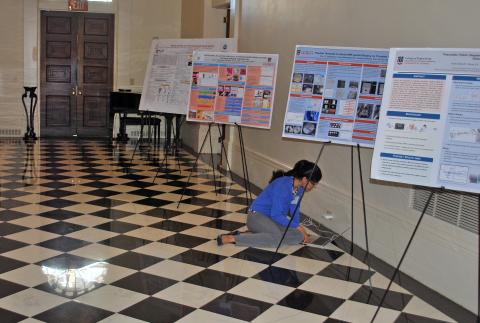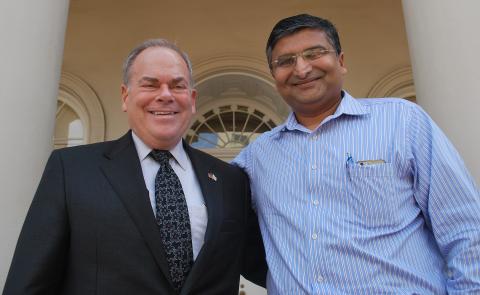International Symposium on Medical Robotics debuts at Georgia Tech; Jaydev Desai receives $3 million NIH R01 grant for a collaborative project
Medical robotics expanded its footprint at the Georgia Institute of Technology with two significant developments in March.
The month began with the first ever International Symposium on Medical Robotics (ISMR), a three-day gathering of some of the world’s thought leaders in the field, who shared their latest research at the Historic Academy of Medicine at Georgia Tech. And not long after that, Jaydev Desai, director of the Georgia Center of Medical Robotics (GCMR) at Georgia Tech, received a $3 million NIH Research Project Grant (R01).
“We are one of the very few places in the U.S., if not the world, doing top notch work in robotics,” said Desai, professor in the Wallace H. Coulter Department of Biomedical Engineering at Georgia Tech and Emory University, and a researcher with the Petit Institute for Bioengineering and Bioscience at Georgia Tech.
Desai, who also is associate director of the Institute for Robotics and Intelligent Machines at Georgia Tech, organized and chaired the symposium, which brought more than 100 experts from across the U.S., and six different countries, to Atlanta.
“The response was terrific,” Desai said. “Attendees enjoyed the breadth and depth of the symposium. They liked the fact that the focus was medical robotics, not just surgical robotics. There was broad appeal.”
Speakers from universities and institutions in the U.S., Canada, France, Italy, the Netherlands, and the United Kingdom presented a wide range of research topics, including, among many other things: “Computer-Assisted Technologies for Laser Microsurgery” (Leonardo De Mattos, Istituto Italiano di Tecnologia); “Medical Microbrobotics: Wireless Control of Miniaturized Agents” (Sarthak Misra, University of Twente, Netherlands); “Soft Wearable Robots for the Community and the Home” (Conor Walsh, Harvard); and “Mobile Manipulators for Intelligent Physical Assistance,” (Charlie Kemp, Georgia Tech).
Additionally, there were keynote speeches from experts, such as, Jonathan Lewin (president and CEO of Emory Healthcare) and Steven Wolf (Emory School of Medicine).
“So basically, we covered a lot of ground in a lot of different areas,” said Desai, who is already considering how he might grow the symposium next year to also include what he’s calling, “a Spring School on Medical Robotics, based on the summer schools for medical robotics that have been held in the U.S. in the past.”
The last one was held in 2014, at Carnegie Mellon University in Pittsburgh. Desai wants to revive the program and include it with the symposium, creating a week-long event. It’s all part of an initiative he’s been pursuing to grow medical robotics at Georgia Tech since arriving here from the University of Maryland in August 2016.
NIH Grant Will Aid Repair of Mitral Regurgitation
Formerly a professor in the Department of Mechanical Engineering at the University of Maryland, Desai has been the recipient of several R01 grants in the past. But this latest one is his first NIH R01 since arriving at Georgia Tech, and it includes three principal investigators (PIs).
In addition to Desai, who is the contact-PI, the team includes Muralidhar Padala, an assistant professor of cardiothoracic surgery at Emory, and a Coulter Department faculty member; and Baowei Fei, formerly of Emory, now at the University of Texas-Dallas.
The title of their project supported by the $3-million, four-year grant from the National Institute of Biomedical Imaging and Bioengineering (NIBIB) of NIH is, “Image-guided Intravascular Robotic System for Mitral Valve Repair and Implants.” Desai’s role in the research, essentially, is to develop an articulated intravascular steerable robotic system which will safely deliver an implant (developed at Emory) to the mitral valve leaflets under image-guidance, to repair mitral regurgitation.
“This work involves several pieces,” Desai said. “There is the design of the implant, intravascular robotics, and the imaging piece, which helps the clinician to guide the robot and understand where and how to move and where to place the implant. So, this is a true collaborative effort.”
Additional Images
